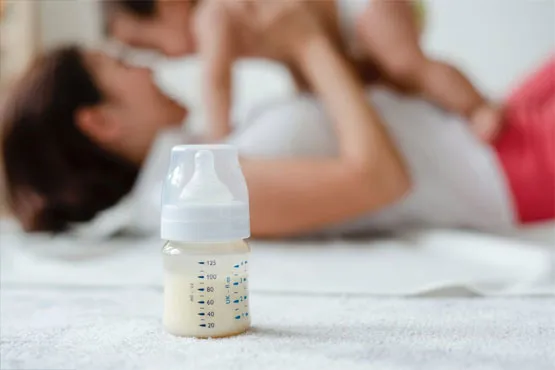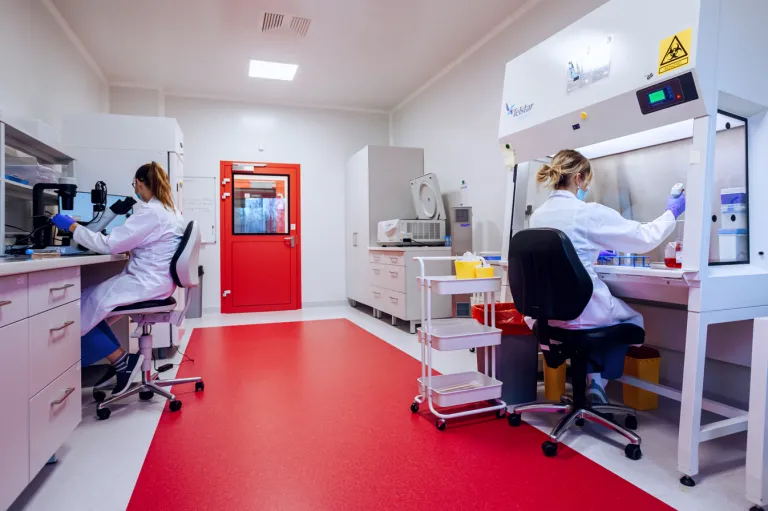Postpartum in gynecology and obstetrics is called the first 6-8 weeks after the birth of a child. This is a time of change, both in Mom's life and in her body. Those formed during pregnancy are retreating, and the body is regenerating and slowly returning to the state it was in nine months ago. What should you know about puerperium and what complications it can bring?
What is postpartum?
Is a period of several weeks following childbirth. It can be divided into 3 stages:
- the immediate stage-the first 24 hours after delivery; it has the highest risk of complications,
- Early postpartum (the first week after the baby is born)
- late postpartum (up to 6-8 weeks after delivery)
During the postpartum period, activities such as carrying a weight greater than that of the baby and bathing in a bathtub should be avoided, and sexual intercourse and the use of tampons should absolutely be abandoned. Physical training is not recommended until 6 weeks after a natural childbirth, and you should wait about 2 months after a cesarean section. In turn, it is best to consult a urogynecological physiotherapist on this issue, who will adjust the intensity of the exercises to the woman’s current condition. This is important because of the risk of, among other things, the distention of the rectus abdominis muscles and the occurrence of hernias. Walking or normal daily activities of a woman are recommended and very important throughout the postpartum period.
Changes in the body during puerperium
During the postpartum period, a number of changes take place in a woman’s body to restore the pre-pregnancy state. The concentration of pregnancy hormones decreases. In turn, the concentration of prolactin increases. The uterus shrinks, especially during breastfeeding (due to the effects of oxytocin), and perineal or cesarean section wounds heal. The vagina stretched during childbirth returns to its pre-pregnancy state after about 3 weeks. However, note that the entrance to the vagina usually becomes freer than before. Menstruation occurs depending on whether or not a woman breastfeeds her child and how often. This is due to increased prolactin levels during breastfeeding, which results in reduced estrogen production and lack of menstrual occurrence. However, this is a very individual issue, as some moms get their period as early as the end of the postpartum period, while other women only get their period a few weeks after they stop breastfeeding or start expanding their baby’s diet. The same is with the timing of the first ovulation after childbirth. Note that the absence of menstruation after childbirth does not exclude the presence of ovulation, so breastfeeding cannot be considered a method of contraception. With the loss of blood during childbirth, the volume of circulating blood decreases, as well as the concentration of hemoglobin, so some ladies should supplement iron. Normalization of heart rate and blood pressure occurs within the first week of puerperium. Iron concentration, on the other hand, should normalize 14 days after delivery.
Postpartum feces
In connection with the regeneration and healing of the endometrium and uterus, the so-called “endometrium” appears in a woman after childbirth. postpartum feces. Their excretion can continue throughout the puerperium and last up to 6-8 weeks. However, their nature changes over time. At first they are bloody, then brown (after a few days of confinement), at the end of the 2nd. weeks become lighter (yellow) to whitish-gray, until they eventually disappear completely. It is important to remember proper hygiene, as feces can be a breeding ground for bacteria. If bleeding persists or puerperal feces are profuse, visit a gynecologist or emergency room to rule out late postpartum hemorrhage, for example.
Postpartum complications:
- Postpartum mastitis
It affects 1/3 of breastfeeding women and usually appears about 2-3 weeks after breastfeeding begins. It can occur as a result of improper feeding technique, damage to the nipple or overproduction of milk. It manifests itself with pain and redness usually in one breast. If the symptoms do not subside after emptying the breast and applying compresses, antibiotic therapy is instituted, which usually lasts 10 days. Sometimes it happens that an abscess develops, which should be incised and drained by medical personnel. Note that breast cancer has similar symptoms to mastitis, so if they persist, a histopathological examination should be performed. Importantly, postpartum breast inflammation is not a contraindication to continuing to breastfeed your baby.
- Venous thromboembolism during puerperium
It is the most common cause of death among postpartum women in developed countries. In order to prevent hemorrhage during labor, the pregnant woman’s body develops a state of hypercoagulability, which is physiological during pregnancy. Therefore, during its course, the risk of thrombotic changes increases significantly. The percentage increases even more during the postpartum period. If a woman additionally suffers from thrombophilia, the risk of venous thromboembolism is very high. Doctors in such situations implement anticoagulant treatment according to the current recommendations corresponding to the risk factors present in a particular woman.
- Postpartum endometritis
Endometrial infection is most common after delivery by cesarean section. It is caused by bacteria originating in the vagina or cervical canal. In addition to cesarean section, risk factors include premature rupture of the fetal membranes, diabetes, preterm labor or post-term pregnancy. Symptoms, which include fever and lower abdominal pain, usually appear in 3-4. day after delivery, but can occur throughout the puerperium. Treatment involves the use of antibiotics. To avoid puerperal endometritis, 1 dose of an antibiotic is usually administered before a cesarean section, the most common being cefazolin.
- Postpartum depression
It is considered one of the most common complications in puerperium and affects 10-15% of women. Postpartum depression is much more common, being a mild symptom that appears in up to 85% of obstetric women and usually disappears around 14. postpartum day. To diagnose postpartum depression, special diagnostic criteria are used. Its exact cause is not known, but hormonal disturbances experienced by a woman after giving birth may contribute, among other things. Treatment of depression depends on the severity of its symptoms and is based on pharmacology, as well as cognitive-behavioral therapy, among other things. The symptoms associated with postpartum depression should definitely not be underestimated, as without proper treatment it can persist for a very long time and carry distant consequences.
Bibliography:
Clinical Situations in Obstetrics, ed. Scientific: G. Bręborowicz, PZWL 2017
Obstetrics and Gynecology, Volume I, G. Bręborowicz, PZWL 2019
Rate this article:











